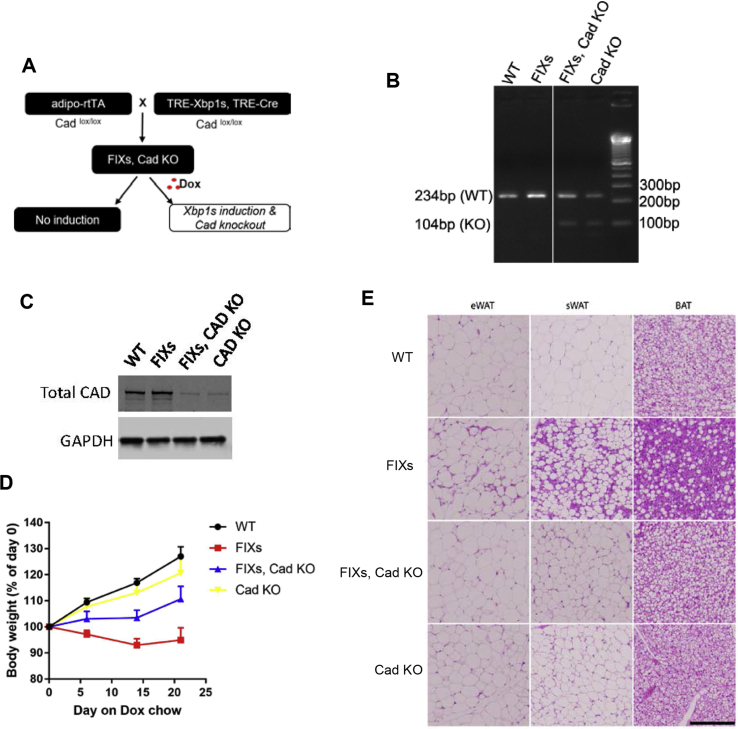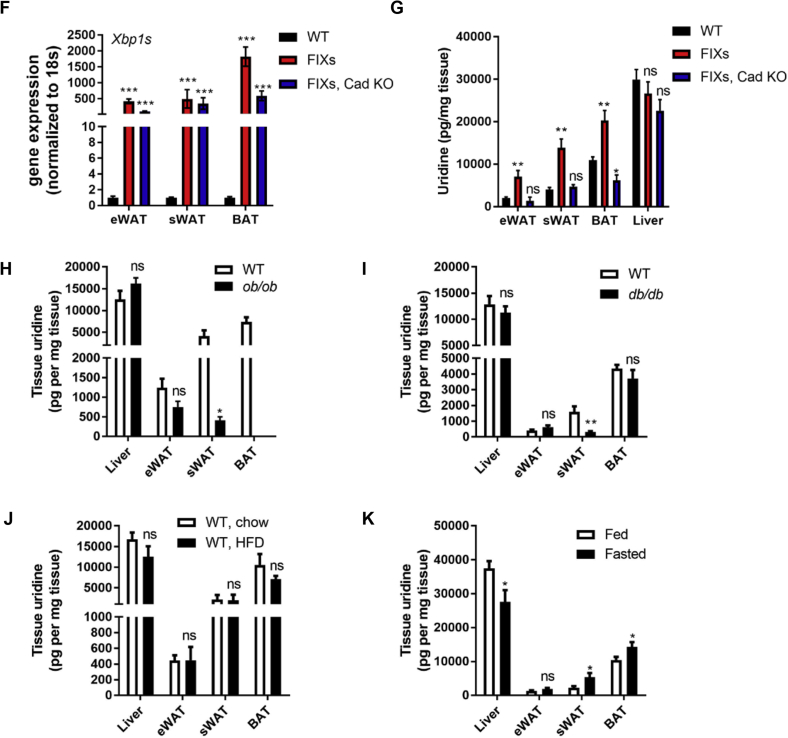Figure 7.
Adipocyte Cad knockout prevents pyrimidine synthesis and weight loss triggered by Xbp1s overexpression. (A) Strategy for the generation of mouse model for inducible adipocyte Xbp1s overexpression and Cad knockout (FIXs, Cad KO). (B) Representative gel image of PCR products of CAD from BAT derived cDNA. Exon 3 of CAD, which contains 130 nucleotides, is flanked by two loxP sites. The removal of exon 3 in CAD gene produces a CAD mutant transcript which can generate a 104 bp PCR product amplified from the cDNA with specifically designed primer set (Supplemental Table 1). (C) Representative western blot image of full-length CAD protein in adipocytes isolated from sWAT. GAPDH was blotted as loading control. (D) Bodyweight of mice prior to and post switch to Dox chow (WT, n = 9; FIXs, n = 7; FIXs, Cad KO, n = 6; Cad KO, n = 5). (E) Representative H&E staining image of adipose tissues from mice. Scale bar, 200 μM. (F) Gene expression of Xbp1s in fat depots (n = 3–4 each group). (G) Uridine concentrations in fat depots and liver (n = 3–4). Statistical analysis was performed for each tissue type using WT mice as base line if not specified. (H) Uridine concentrations in liver and fat depots from WT and ob/ob mice that were 19–23 weeks old on chow (n = 5). The ob/ob mice lack visible BAT at the time of harvest. (I) Uridine concentrations in liver and fat depots from WT and db/db mice that were 28–31 weeks old on chow (n = 5). (J) Uridine concentrations in liver and fat depots from WT male mice that were 19–21 weeks old and on HFD for 8 weeks (n = 4). (K) Uridine concentrations in liver and fat depots from WT male mice that were 26–31 weeks old and on Dox chow from 8 weeks of age (n = 5–6). Data were analyzed with two-tailed Student t test. *, p < 0.05, **, p < 0.01. ns, not significant. Error bars denote SEM.


